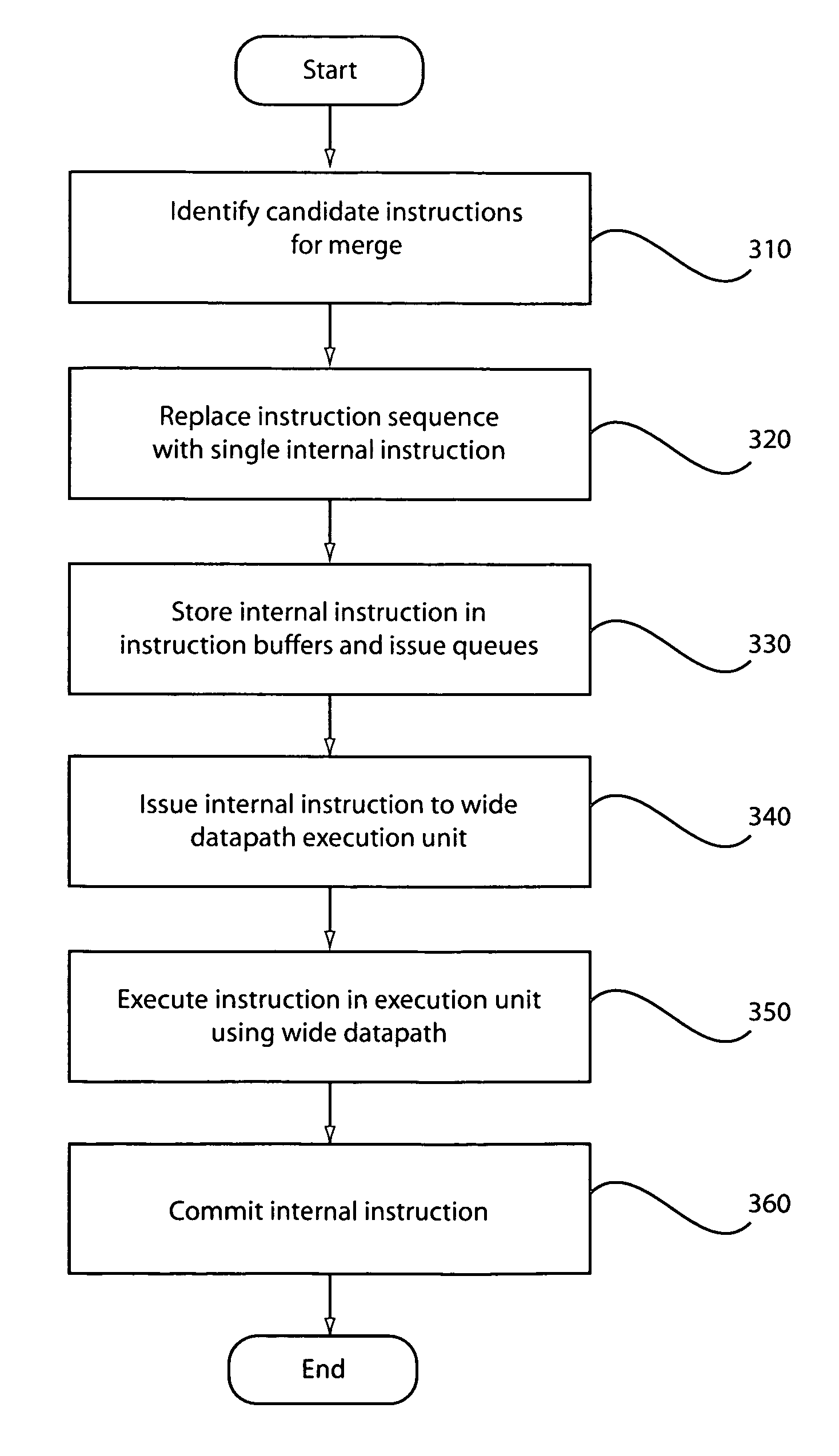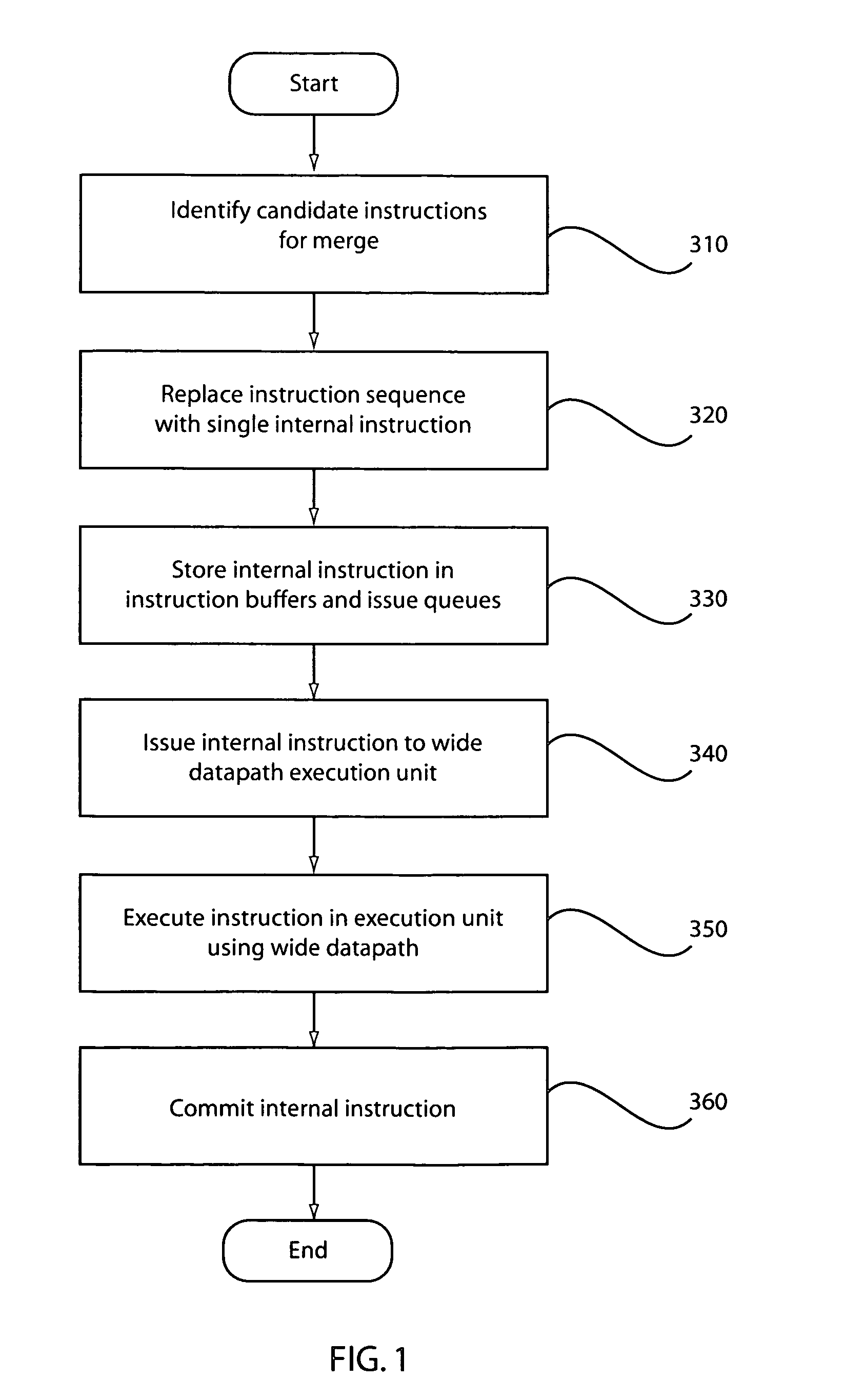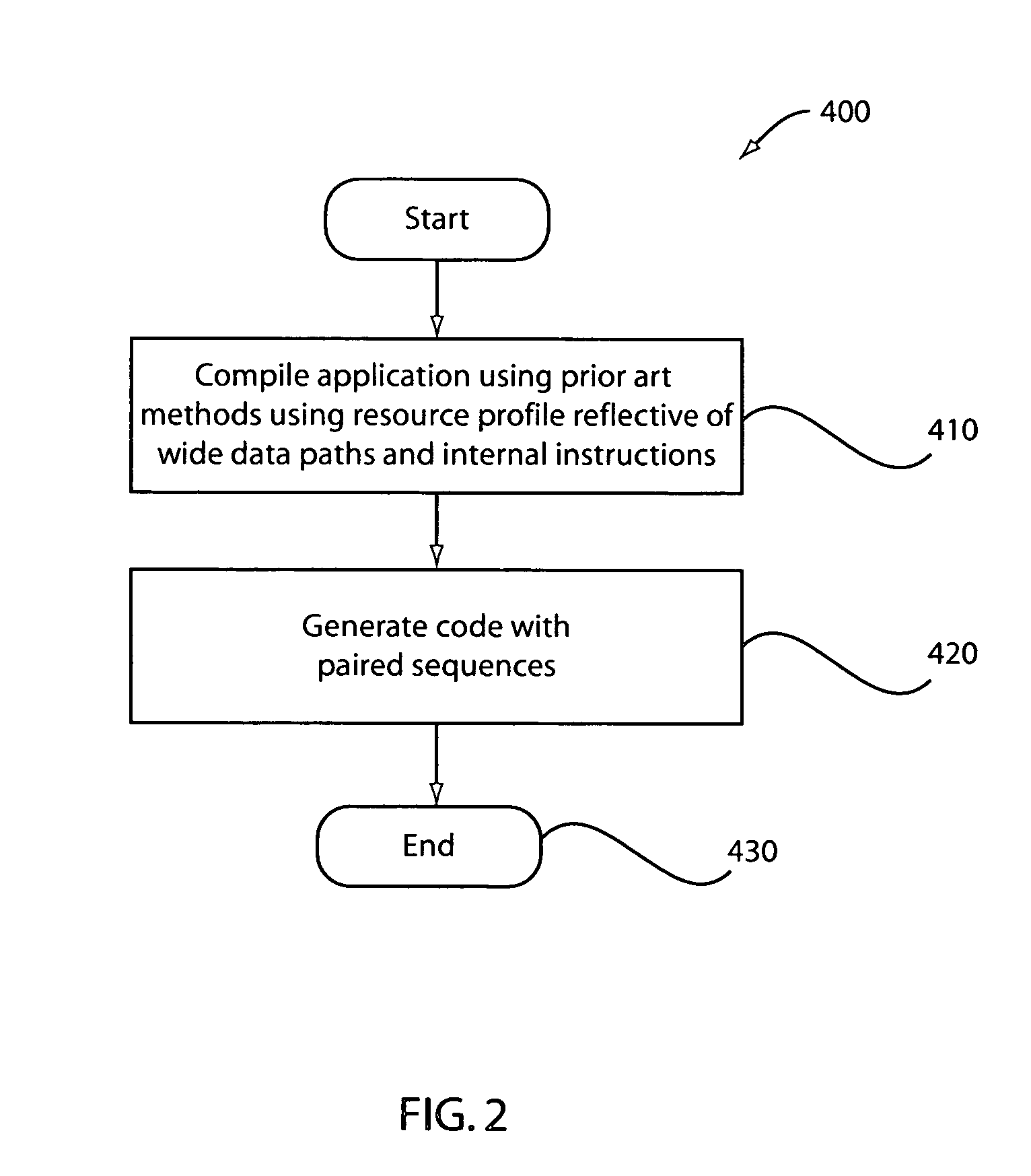Method and apparatus for the dynamic creation of instructions utilizing a wide datapath
a microprocessor and data path technology, applied in the field of microprocessor processing instructions, can solve the problems of exploding power budgets, non-scaling or reverse scaling of signal speeds, modern microprocessor design faces, etc., and achieve the effect of maintaining compatibility with legacy systems and enhancing performan
- Summary
- Abstract
- Description
- Claims
- Application Information
AI Technical Summary
Benefits of technology
Problems solved by technology
Method used
Image
Examples
example 1
Code Sequence Using Architected Instructions
[0053] FMA f4=f8, f12, f16 [0054] FMA f5=f9, f13, f17
Internal Instruction Replacing Architected Sequence [0055] PFMA f4=f8, f12, f16
[0056] In this example, the PFMA is a single internal operation, creating two floating-point multiply-add results in register pair (f4, f5) indicated by a first register f4 of the pair, and reading as operands register pairs (f8, f9) and (f12, f13) and (f16, f17) indicated by the first registers f8, f12, f16 of the register pairs, respectively.
[0057] In accordance with another embodiment, structurally similar instructions are merged to generate a single wide data operation. In one exemplary embodiment, two 64 bit architectural add operations used to compute a 128 bit sum are merged into a single 128 bit operation:
example 2
Code Sequence Using Architected Instructions
[0058] Addc r8=r10, r12 [0059] Adde r9=r11, r13
Internal Instruction Replacing Architected Sequence [0060] Add128 r8=r10, r12
[0061] In this example, the Add128 is a single internal operation, creating a 128 bit result stored in register pair (r8, r9) indicated by a first register r8 of the pair, and reading as operands register pairs (r10, r11) and (r12, r13) indicated by the first registers r10, r12 of the register pairs, respectively.
[0062] In accordance with one embodiment, instructions to be merged should meet additional constraints. For example, all register specifiers of one instruction should refer to an even register number, and register specifiers of a second instruction should refer to an odd register number. In another embodiment, register accesses for paired instructions are performed by implementing an odd and an even register bank, whereby the odd and even datapath elements (e.g., those logic circuits of a data path oper...
example 3
[0066] Thus, in one exemplary execution sequence, the Power Architecture™ instructions, [0067] FMA f4=f8, f12, f22 [0068] FMA f5=f9, f13, f22
are converted by data-parallel instruction creation logic to one internal SIMD opcode with scalar operand, [0069] PSFMA f4=f8, f12, f16
[0070] The PSFMA is a single internal operation, creating a result in register pair (f4, f5) indicated by the first register f4 of the pair, and reading as operands register pairs (f8, f9) and (f12, f13) and scalar register f16 indicated by the first registers f8 and f12, of the register pairs, and f16, respectively.
[0071] Load instructions may be executed as scalar load instructions. Load pair instructions may be present in the instruction set in an architecture, such as the Power Architecture™. Paired load instructions may be generated by recognizing one or more special idioms.
[0072] In one embodiment, only instructions having a single base register (rbase) and an instruction encoded immediate displacemen...
PUM
 Login to View More
Login to View More Abstract
Description
Claims
Application Information
 Login to View More
Login to View More - R&D
- Intellectual Property
- Life Sciences
- Materials
- Tech Scout
- Unparalleled Data Quality
- Higher Quality Content
- 60% Fewer Hallucinations
Browse by: Latest US Patents, China's latest patents, Technical Efficacy Thesaurus, Application Domain, Technology Topic, Popular Technical Reports.
© 2025 PatSnap. All rights reserved.Legal|Privacy policy|Modern Slavery Act Transparency Statement|Sitemap|About US| Contact US: help@patsnap.com



